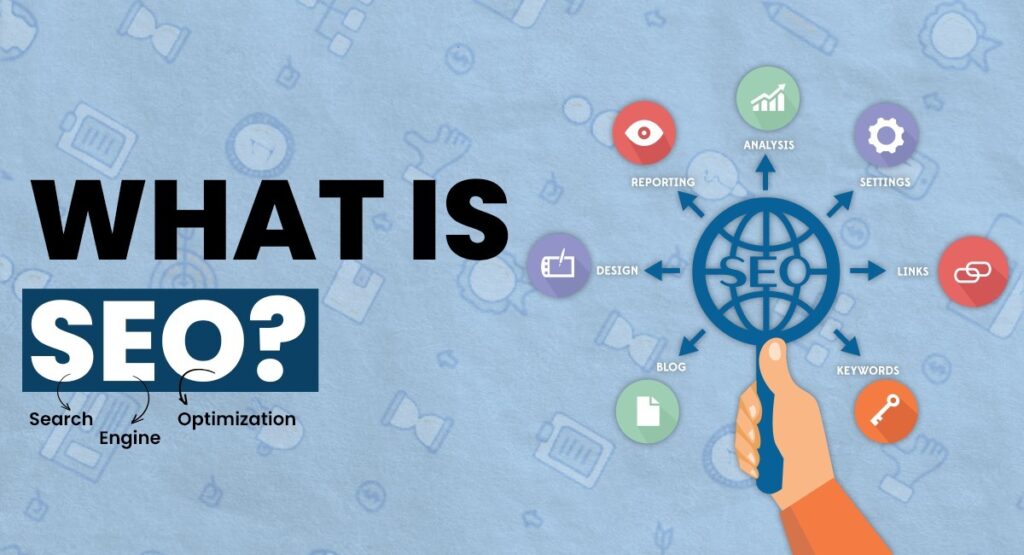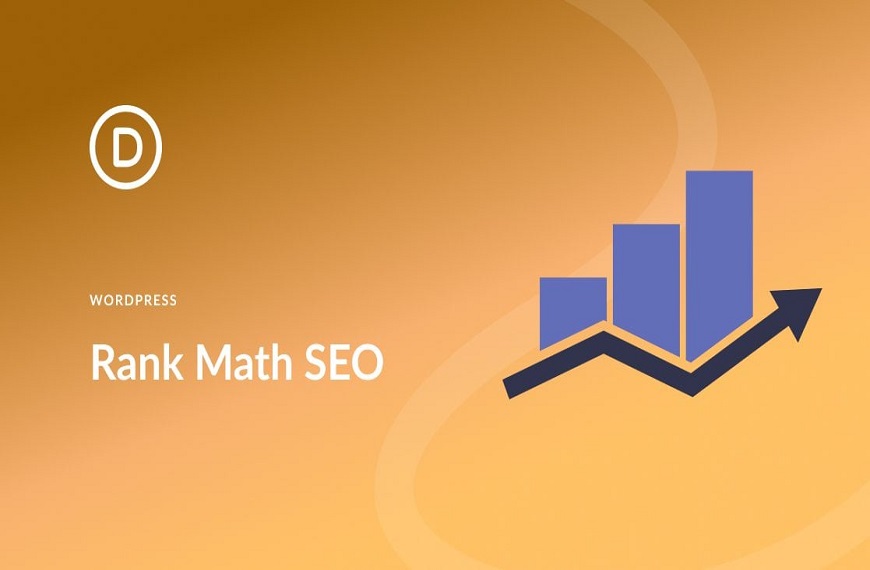What is SEO?
Introduction to SEO:
SEO stands for Search Engine Optimization. It’s the practice of optimizing content to be discovered through a search engine’s organic search results.
Think of a search engine as a filing system in a library. The library has potentially billions of books with hundreds of trillions of pages. So let’s say you want to find information on health supplements. The search engine will then look through all pages in its index and try to return the most relevant results.
Now, the first search engine you’re probably thinking of is Google. But there are tons of other search engines you can optimize your content for. For example, YouTube SEO is the process of getting traffic to your videos in YouTube’s organic search results. Amazon SEO is the same, but you’re optimizing your product pages to get free organic traffic. And of course, Google SEO is the process of optimizing your website to rank on Google and drive more traffic to your web pages.
Now, search engines use sophisticated algorithms and technology to return the best results for any given query. Nobody knows exactly how these algorithms work, but we have clues, particularly for Google, so we can make some optimizations.
Chapter 1: The Role of Search Engines in Digital Marketing
1.1 Understanding Search Engines: – Definition and Functionality: Explore the role of search engines in indexing, ranking, and delivering relevant content to users based on their search queries. – Major Search Engines: Discuss the dominance of Google in the search engine market and the significance of other players such as Bing and Yahoo.
1.2 Importance of Organic Search Traffic: – Differentiating Organic vs. Paid Search: Highlight the distinction between organic search results generated through SEO efforts and paid search results obtained through advertising. – Benefits of Organic Traffic: Examine the long-term benefits of organic search traffic, including higher credibility, cost-effectiveness, and sustainable growth.
Chapter 2: Fundamentals of On-Page SEO
2.1 Keyword Research and Analysis: – Importance of Keywords: Discuss the critical role of keywords in SEO and their impact on search engine rankings. – Keyword Research Tools: Explore popular keyword research tools such as Google Keyword Planner, SEMrush, and Moz Keyword Explorer for identifying relevant keywords and assessing their search volume and competition.
2.2 On-Page Optimization Techniques: – Title Tags and Meta Descriptions: Explain the significance of title tags and meta descriptions in conveying the relevance of web pages to search engines and users. – Content Optimization: Discuss best practices for optimizing website content, including the strategic placement of keywords, use of heading tags, and incorporation of multimedia elements. – URL Structure: Highlight the importance of clear and descriptive URLs for both search engines and users and provide guidelines for optimizing URL structure.
2.3 Technical SEO Considerations: – Site Speed and Performance: Explore the impact of website speed on user experience and search engine rankings, and discuss optimization techniques such as image compression, browser caching, and minification. – Mobile Optimization: Emphasize the importance of mobile-friendly websites in light of Google’s mobile-first indexing and provide tips for optimizing websites for mobile devices.
Chapter 3: Off-Page SEO Strategies
3.1 Link Building Fundamentals: – Importance of Backlinks: Discuss the significance of backlinks as a key ranking factor in search engine algorithms and their role in establishing website authority and credibility. – Types of Backlinks: Explore different types of backlinks, including natural, manual, and self-created links, and their respective impact on SEO.
3.2 Link Building Techniques: – Content Promotion and Outreach: Outline strategies for promoting high-quality content and building relationships with influencers, bloggers, and webmasters to earn backlinks organically. – Guest Blogging: Discuss the benefits of guest blogging as a link building strategy and provide guidelines for identifying relevant guest blogging opportunities and creating valuable content.
Chapter 4: Measuring SEO Success
4.1 Key Performance Indicators (KPIs) in SEO: – Organic Traffic: Highlight the importance of monitoring organic traffic metrics, including total visits, unique visitors, and traffic sources, to assess the effectiveness of SEO efforts. – Keyword Rankings: Discuss the significance of tracking keyword rankings to evaluate the visibility and performance of targeted keywords in search engine results.
4.2 SEO Analytics Tools: – Google Analytics: Explore the features and functionalities of Google Analytics for tracking and analyzing website traffic, user behavior, and conversion metrics. – SEO Platforms: Introduce popular SEO platforms such as Google Search Console, SEMrush, and Moz Pro for monitoring website performance, conducting competitor analysis, and identifying optimization opportunities.
Search Engine Optimization (SEO) Let’s explore these benefits in detail:
- Increased Website Visibility: SEO aims to improve a website’s ranking in search engine results pages (SERPs) for relevant keywords and phrases. By optimizing various on-page and off-page elements, businesses can enhance their visibility in search results, making it easier for potential customers to find them when searching for related products or services.
- Higher Quality Traffic: Organic search traffic, generated through SEO efforts, tends to be more targeted and relevant compared to traffic from other sources. Since users actively search for specific information or solutions, they are more likely to engage with content that meets their needs, leading to higher conversion rates and better ROI.
- Cost-Effectiveness: Unlike paid advertising, which requires ongoing investment to maintain visibility, organic search traffic obtained through SEO does not incur direct costs per click or impression. While initial investments may be required for SEO strategy development and implementation, the long-term benefits often outweigh the expenses, making SEO a cost-effective marketing solution in the long run.
- Improved User Experience: Many aspects of SEO, such as optimizing website speed, enhancing mobile responsiveness, and creating high-quality, informative content, contribute to a better overall user experience. Websites that load quickly, provide relevant information, and offer intuitive navigation are more likely to satisfy users’ needs and encourage engagement and conversion.
- Builds Credibility and Trust: Websites that rank highly in search engine results are perceived as more credible and trustworthy by users. By appearing at the top of SERPs for relevant queries, businesses can establish authority in their industry and build trust with their target audience, ultimately leading to increased brand loyalty and customer retention.
- Long-Term Sustainability: While paid advertising campaigns provide immediate visibility, their effects are temporary and cease once the advertising budget runs out. In contrast, SEO efforts yield long-term benefits and sustainability, as organic search rankings are not dependent on ongoing financial investment. By consistently optimizing their websites and content, businesses can maintain and even improve their search rankings over time.
- Competitive Advantage: In today’s competitive online landscape, securing a prominent position in search engine results can provide a significant competitive advantage. By outranking competitors in search results for relevant keywords, businesses can attract more traffic, leads, and sales, ultimately gaining a larger share of the market and solidifying their position as industry leaders.
- Insights into Customer Behavior: SEO tools and analytics platforms provide valuable insights into customer behavior, preferences, and search patterns. By analyzing data such as keyword search volume, click-through rates, and conversion metrics, businesses can gain a deeper understanding of their target audience and tailor their SEO strategies accordingly to better meet their needs and preferences.
Why should you incorporate SEO into your marketing strategy?
There are 3 major benefits of search engine optimization that attracts marketers from all over the world:
- Traffic from your SEO efforts are free.
- Your traffic will be consistent once you’re ranking high.
- You have the opportunity to reach massive audiences you wouldn’t have access to otherwise.
Since every search engine has unique algorithms, we’re going to be focusing on how Google works to rank pages since it’s the largest search engine and the one that we here at Ahrefs have the most information on.
How does Google work?
Understanding how Google works is crucial for implementing effective SEO strategies and optimizing your website for search engine visibility. Google’s search engine operates through a complex algorithm that evaluates and ranks billions of web pages to provide users with the most relevant and useful results for their search queries. Here’s an overview of how Google works and its impact on SEO:
- Crawling and Indexing:
- Google uses automated programs called “crawlers” or “spiders” to systematically browse the web and discover new web pages. These crawlers follow links from one page to another and index the content they find.
- Once a web page is crawled, Google’s indexing process stores and organizes the content of the page in its vast database, known as the Google Index. This allows Google to quickly retrieve and display relevant results when users enter search queries.
- Ranking Algorithm:
- Google’s ranking algorithm evaluates numerous factors to determine the relevance and quality of web pages for a given search query. While Google’s algorithm consists of hundreds of ranking signals, some of the most important factors include:
- Relevance: Google assesses the relevance of a web page to a user’s search query based on factors such as keyword usage, content quality, and topical relevance.
- Authority: Google considers the authority and credibility of a website, as indicated by factors like backlinks from other reputable sites, domain age, and user engagement metrics.
- User Experience: Google prioritizes web pages that provide a positive user experience, including factors like page load speed, mobile-friendliness, and secure HTTPS connections.
- Freshness: Google favors up-to-date and timely content, particularly for queries related to news, events, and trending topics.
- Rich Snippets: Google may display rich snippets, such as featured snippets, knowledge panels, and rich results, for certain search queries to enhance the search experience and provide more relevant information directly in the search results.
- Google’s ranking algorithm evaluates numerous factors to determine the relevance and quality of web pages for a given search query. While Google’s algorithm consists of hundreds of ranking signals, some of the most important factors include:
- Updates and Algorithm Changes:
- Google regularly updates its search algorithm to improve search quality, address spammy practices, and adapt to changes in user behavior and technology. Major algorithm updates, such as Google Panda, Google Penguin, and Google BERT, can significantly impact search rankings and SEO strategies.
- Webmasters and SEO professionals must stay informed about Google’s algorithm updates and best practices to ensure their websites maintain or improve their search visibility.
- User Intent:
- Google’s primary goal is to satisfy user intent by providing searchers with the most relevant and useful information for their queries. Understanding user intent is crucial for optimizing content and targeting keywords that align with what users are searching for.
- Google’s search results are increasingly personalized based on factors such as search history, location, device type, and user preferences, further emphasizing the importance of relevance and user-centric optimization in SEO.
- Quality Guidelines and Penalties:
- Google provides webmasters with quality guidelines and best practices to help them create high-quality, user-friendly websites that comply with its standards. Violations of these guidelines, such as keyword stuffing, cloaking, or link schemes, can result in manual actions or algorithmic penalties that negatively impact a website’s search rankings.
- Adhering to Google’s quality guidelines and focusing on providing valuable, relevant content and a positive user experience is essential for maintaining a favorable relationship with Google and avoiding penalties.
How do Google’s search algorithms work?
On Google’s “How search algorithms work” page, they say that they look at the words of a searcher’s query, relevance and usability of pages, expertise of sources, and your location and settings. These ranking factors aren’t linear, but they’re weighted depending on the nature of your query. For example, freshness of content plays a bigger role in answering queries about current news topics. However, for definition-based queries like “what is search engine optimization,” freshness wouldn’t play as large of a factor, since this core definition itself hasn’t really changed.
In addition to technology-based innovations like artificial intelligence and machine learning, Google also uses a group of people to manually assess how well a website gives people who click on the results what they’re looking for. These people are called “search quality raters.” Rest assured that these aren’t people at Google manually moving your web page around in the search results because they like or don’t like you. These people don’t directly impact rankings but rather help Google benchmark the quality of their results.
Understanding Search Intent
If you’re unable to match the searcher’s intent, in terms of content type and format, your chances of ranking are slim. But there are additional layers to understand how Google works. This leads us nicely into how Google identifies relevance through content on a web page.
In the most basic form, search engines will look at the content of the page to see if the words on that page are relevant to your query. But they’re sophisticated enough to go beyond “exact match keywords.” Google understands related keywords too. A page increases in relevance with other semantically similar keywords. For example, if you have an article on how to get a driver’s license, you may also want to include related keywords like “driving test” or “DMV.”
Licensing for Automobiles
There are subsections on licensing for cars, motorcycles, and buses. These are all automobiles and have keyword overlaps such as “road,” “driving,” “seatbelt,” “safety,” “exam,” and “test.”
Relevance and Quality Content
When creating a post on a specific topic, it is important to include relevant keywords and phrases that can help search engines understand the content. Google looks for relevance signals and quality content, which includes expertise, authoritativeness, and trustworthiness (EAT). Backlinks from other websites can also increase a page’s authoritativeness.
Usability and User Experience
Google considers usability and user experience when ranking webpages. Factors such as page speed and mobile friendliness are important. Slow-loading pages and websites that are not mobile-friendly can result in higher bounce rates. Google also personalizes search results based on location, search history, and search settings.
Optimizing Your Website for Search
To optimize your website for search, it is important to understand how search engines work. You can start by watching tutorials on SEO for beginners and exploring actionable tutorials to grow your search traffic.
Conclusion





